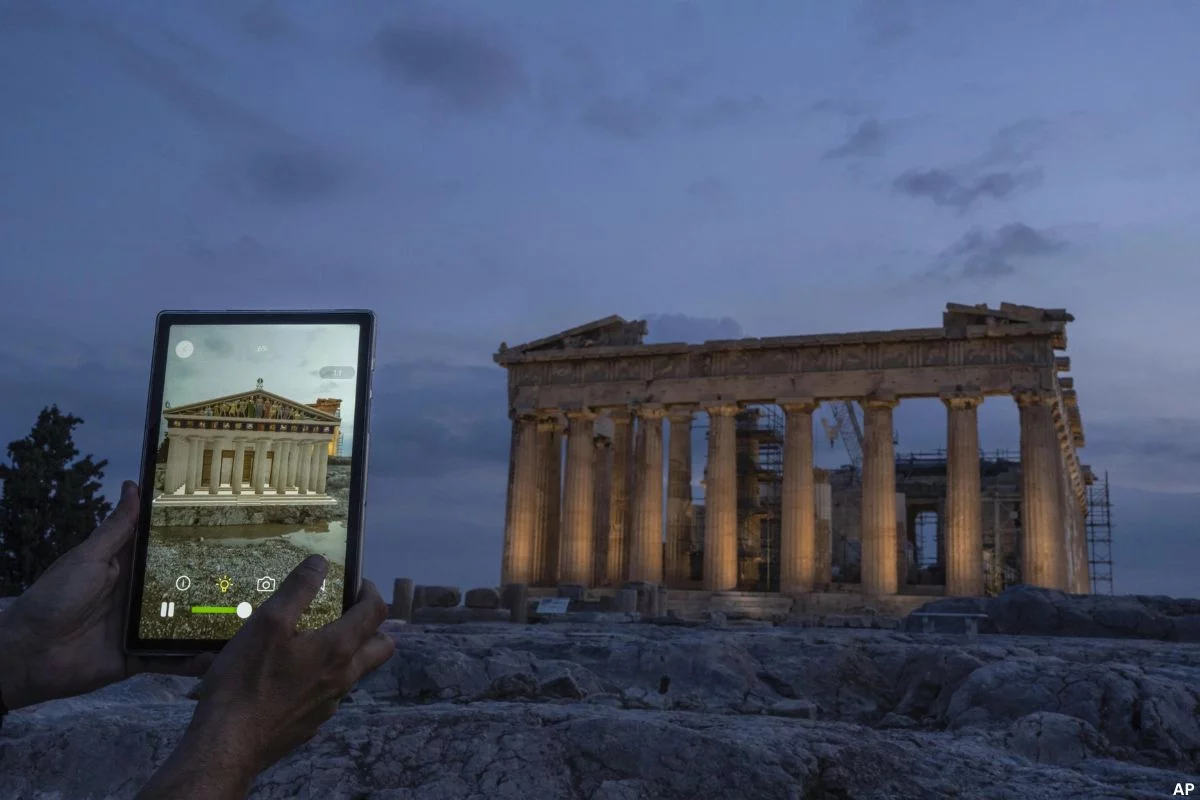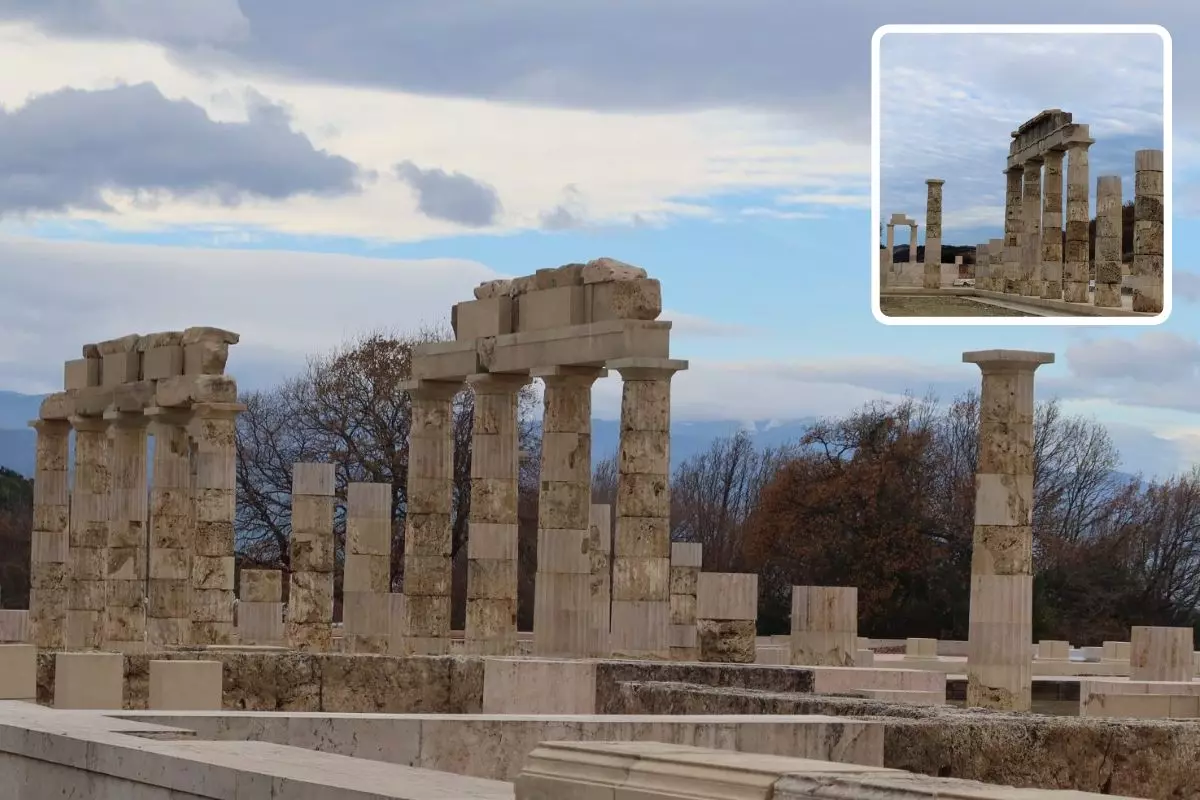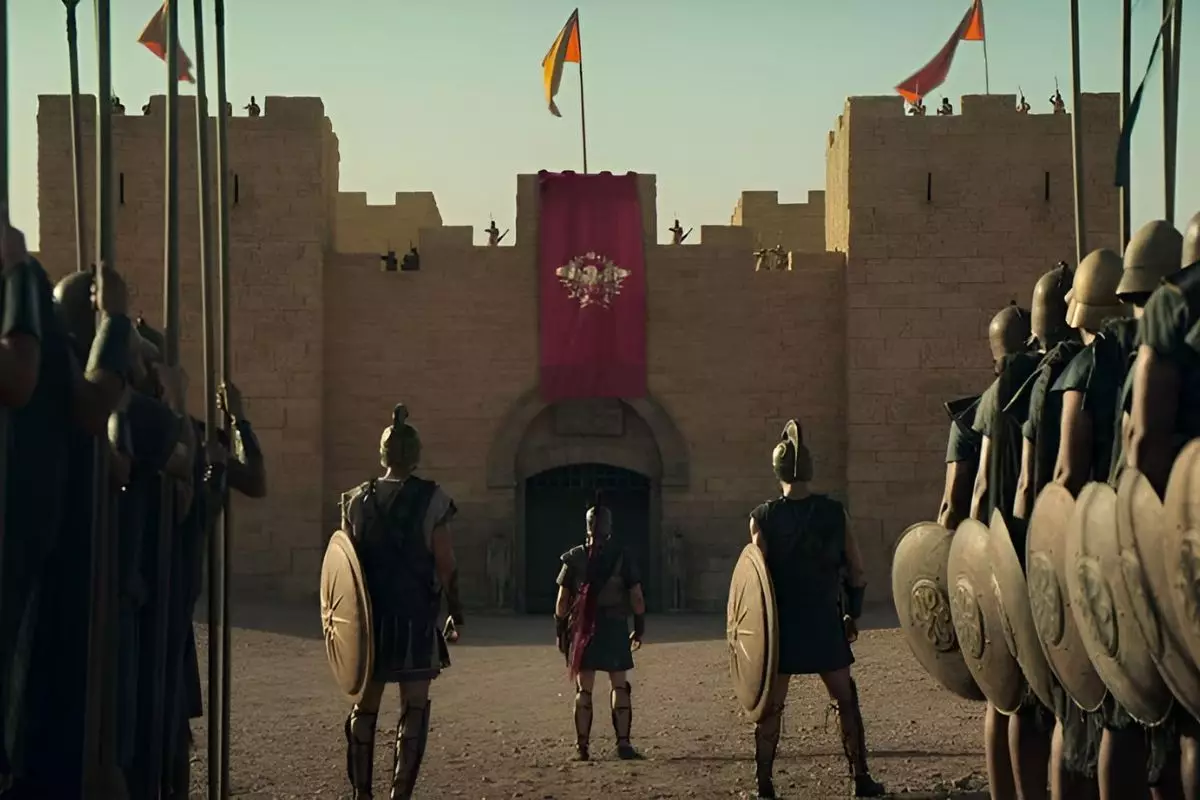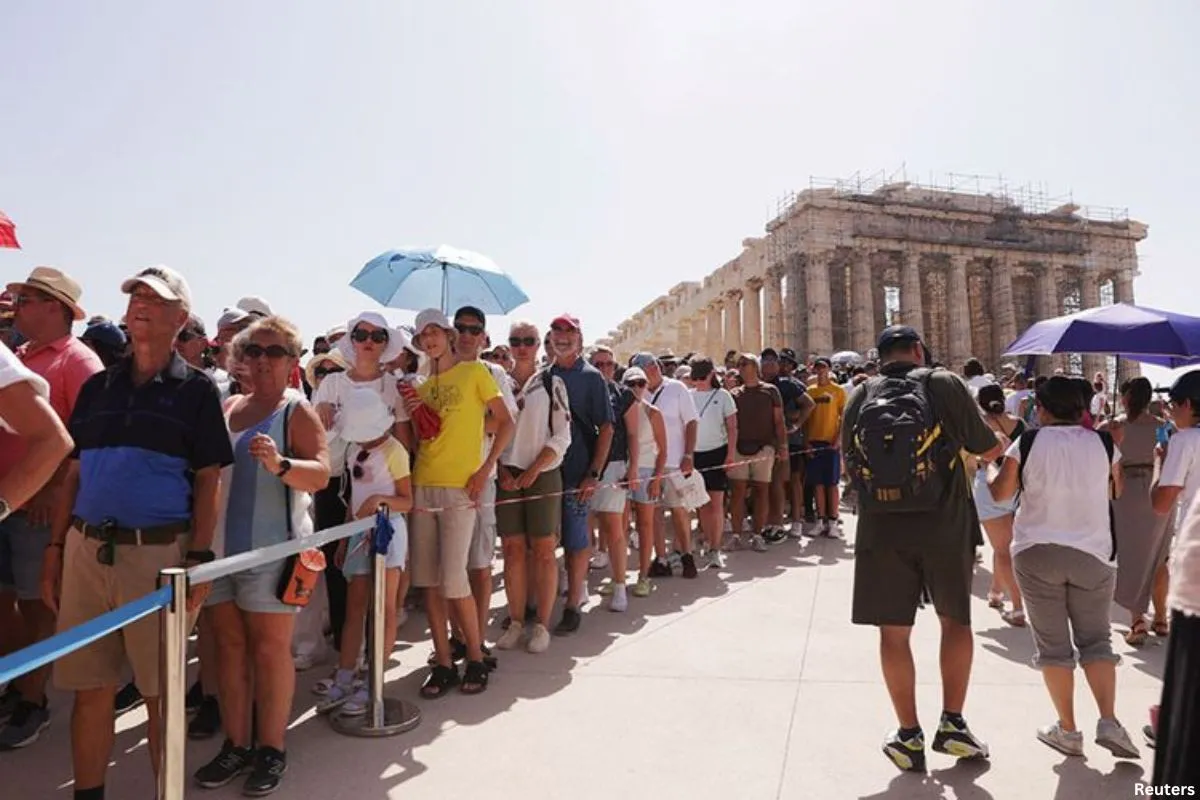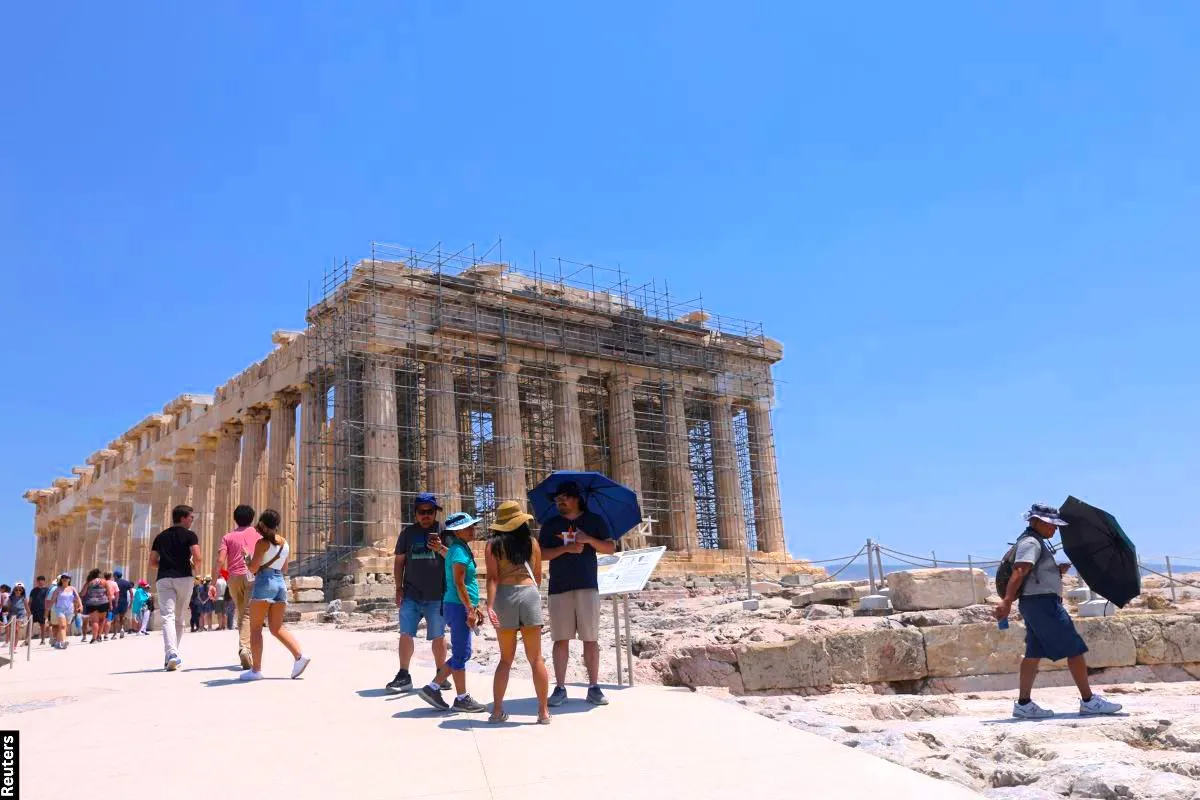Athens, Greece – Imagine visiting the Acropolis in Athens and being able to see it as it appeared thousands of years ago. Thanks to modern technology, this experience is now a reality, and all you need is a smartphone.
The Chronos app, supported by Greece’s Culture Ministry, offers tourists a unique way to explore this ancient Greek site. Using augmented reality, the app overlays digital reconstructions onto the real-world view through your smartphone’s camera. This means you can see the Acropolis and its surroundings as they once were, with a level of detail that is truly impressive.
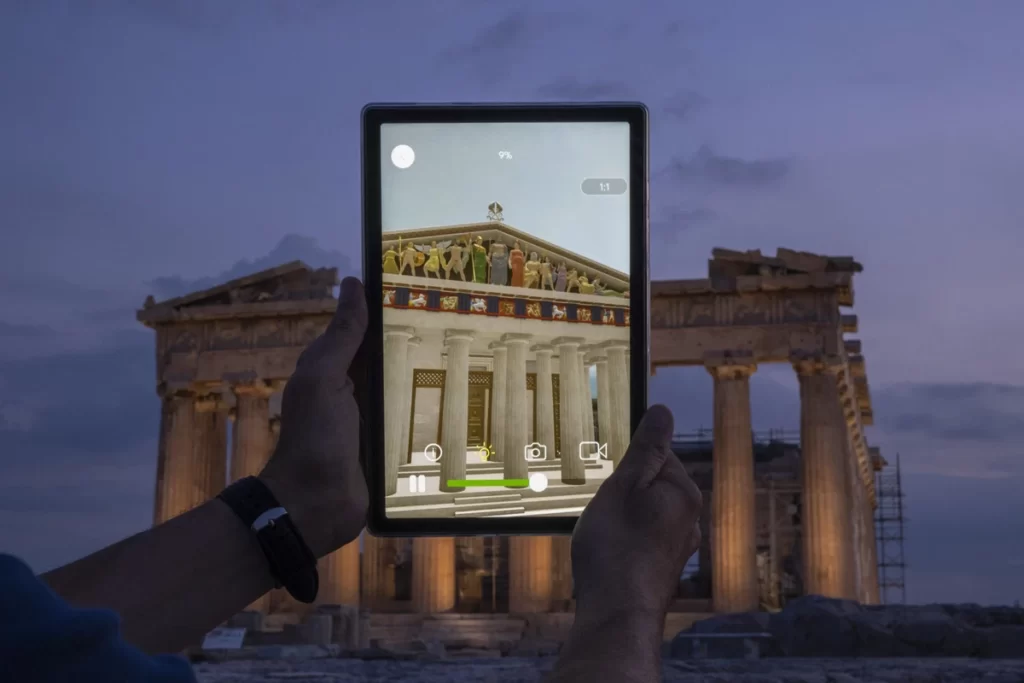
One of the highlights of the app is its ability to show the marble sculptures that were removed from the Parthenon more than 200 years ago and are now housed in the British Museum in London. Greece has been advocating for their return, and through the Chronos app, visitors can point their phones at the Parthenon, and these sculptures magically reappear on the monument, as archaeologists believe they looked 2,500 years ago.
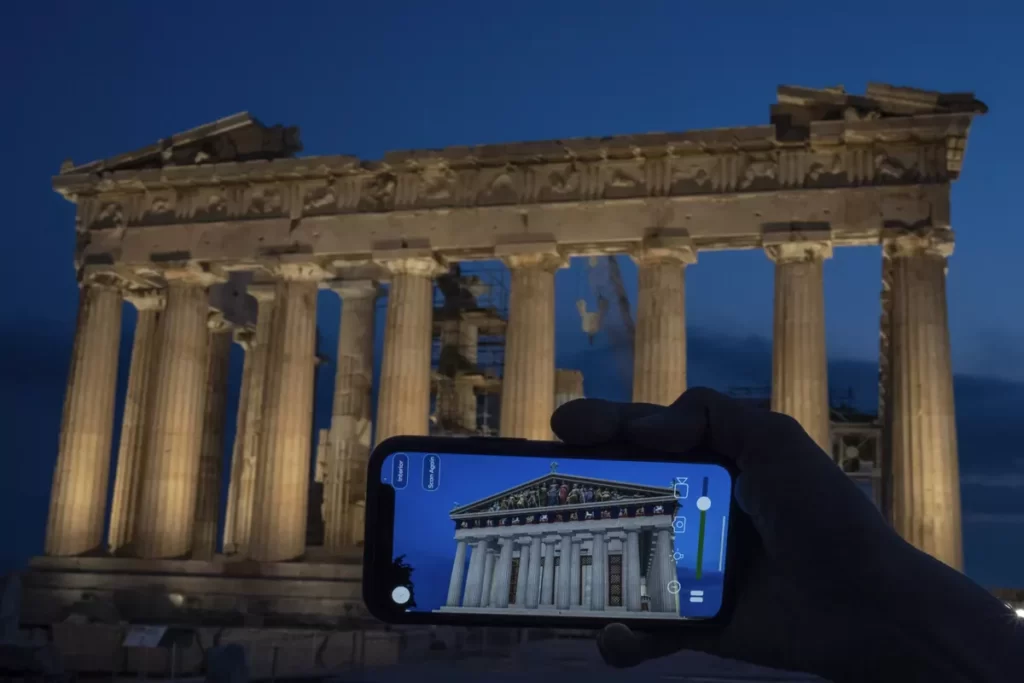
But that’s not all. The app also reveals lesser-known features of the Acropolis, such as the fact that many of the sculptures were painted in vibrant colors, providing a more accurate representation of their original appearance. Additionally, you can discover that a statue of the goddess Athena in the main chamber of the Parthenon once stood over a shallow pool of water.
For tourists like Shriya Parsotam Chitnavis from London, the app adds a whole new dimension to their visit. She expressed her amazement at the technology, comparing it to something you might encounter at the dentist’s office. This interactive experience makes historical sites like the Acropolis more engaging, particularly for visual learners.
Moreover, the app offers convenience. It allows visitors to explore the site without the need for a crowded uphill walk or long waits to get up close to the iconic monuments. This can enhance the overall experience for tourists and contribute to the country’s efforts to promote Greece as a year-round tourist destination.
Tourism is a vital part of Greece’s economy, and despite challenges like wildfires in some regions, it has rebounded strongly since the COVID-19 pandemic. The number of inbound visitors from January through July increased by 21.9% compared to the previous year, with revenue also rising by just over 20%.
The Chronos app, named after the mythological king of the Titans and the Greek word for “time,” leverages augmented reality to transport users back in time. As augmented reality technology continues to advance, we can expect more immersive and integrated experiences, even allowing for sharing options on tours and the overlaying of archive photos and videos.
While AR and VR have been somewhat slower to integrate with tourism compared to other industries like gaming and movies, experts anticipate exciting developments in the coming years. As more content from museums and archives is digitized, travelers can look forward to richer and more interactive experiences.
Greece’s Culture Ministry and national tourism authority have embraced technology to enhance accessibility to the country’s ancient monuments. This includes physical improvements like ramps and anti-slip pathways as well as digital innovations like the Chronos app.
With the help of technology and apps like Chronos, travelers can now embark on a journey through time and explore the wonders of ancient Greece in a whole new way.
